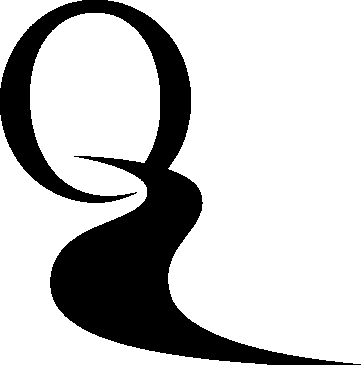GIOTTO IN RUSSIAN POETRY: NEGATIVITY, DESIGN AND CONSTRUCTION OF SOCIETY
Abstract
The perception of Giotto’s heritage in Russian literature and culture has always been directly linked not only with the concept of the Renaissance and the development of Western culture, but with a special interest in writing practice and in the ambition of the narrative presented as innovative style to create communities. The main topic of the poetic thought was the transition from community to society, in other words, from community to church, so Giotto's status as a genius was always supported with statements about other geniuses who directly, but rather indirectly, made this transition. Despite the scarcity of references to the name Giotto, Russian poetry did not so much reflect the current art history conception, but anticipates or corrects conclusions of art historians. My careful analysis of the statements about Giotto in Russian poetry (V. Komarovsky, S. Soloviev, A. Voznesensky) in comparison with the conclusions of Russian philosophy and humanities (P. Florensky, P. Muratov, P. Bitsilli, V. Lazarev) explains plots of the poems related to picturesque impressions. The technique of chiaroscuro in Giotto, who first began to convey plausible depth through the illusory distribution of light, was understood as a technique primarily of hint and reflection, a negative, in comparison with which later Italian painting looks like a colorful positive. Such concept did not correspond to Giotto's real place in the history of art, but it did make it possible to correlate Giotto with Byzantine and Old Russian art using a golden background, emphasizing in the legacy of the Italian artist not credibility, but ability to create own art project relevant other projects.
Downloads
References
Аверинцев, С.С. (1997). Цветики милые братца Франциска»: Итальянский католицизм-русскими глазами. В Православная община. No. 38. 97-105.
Бицилли, П.М. (1996). Место Ренессанса в истории культуры. Санкт-Петербург: Мифрил.
Лазарев, В.Н. (1986) История византийской живописи. Москва: Искусство.
Леонова, Н.Е. (2010) Образ лилии в искусстве модерна и в поэзии И.Ф. Анненского. В Вестник Новгородского государственного университета им. Ярослава Мудрого. No 56. 40-43.
Марков, А.В. (2018). Прокрутка воображения назад. В Новое литературное обозрение. No 152. 281-286.
Муратов, П.П. (2000). Открытия древнего русского искусства. В Муратов, П.П. Ночные мысли. Москва: Прогресс. 47-67.
Назарова, О.А. (2018). «Полиптих-витрина» в итальянской живописи конца XIII– первой половины XIV века. В Искусствознание. No 1. 168-207. Парфёнова, Е.В. (2018). Влияние на художников Флоренции первой половины XIV в. современной им религиозной схоластической доктрины В Вестник Томского государственного университета. Культурология и искусствоведение. No 31. 179-186.
Флоренский, П.А. (2000). Обратная перспектива. В Флоренский, П.А. Собрание сочинений. В 4 т. Т. 3. Ч. 1. Москва: Мысль. 46-100. References
Averintsev, S.S. (1997). Tsvetiki milye brattsa Frantsiska»: Ital'ianskii katolitsizm- russkimi glazami [Cute flowers of Brother Francis: Italian Catholicism through Russian eyes]. In Pravoslavnaia obshchina [Orthodox community]. No. 38. 97- 105. (In Russian.)
Bitsilli, P.M. (1996). Mesto Renessansa v istorii kul'tury [Place of the Renaissance in the history of culture]. Saint-Petersburg: Mifril. (In Russian.)
Lazarev, V.N. (1986) Istoriia vizantiiskoi zhivopisi [The history of Byzantine painting]. Moscow: Iskusstvo. (In Russian.)
Leonova, N.E. (2010) Obraz lilii v iskusstve moderna i v poezii I.F. Annenskogo [The image of a lily in the art of modernity and in the poetry of I.F. Annensky]. In Vestnik Novgorodskogo gosudarstvennogo universiteta im. Iaroslava Mudrogo [Bulletin of Novgorod State University named after Yaroslav the Wise]. No. 56. 40-43. (In Russian.)
Markov, A.V. (2018). Prokrutka voobrazheniia nazad [Scrolling imagination back]. In Novoe literaturnoe obozrenie [New literary review]. No. 152. 281-286. (In Russian.)
Muratov, P.P. (2000). Otkrytiia drevnego russkogo iskusstva [Discoveries of ancient Russian art] In Muratov, P.P. Nochnye mysli [Night meditations]. Moscow: Progress. 47-67. (In Russian.)
Nazarova, O. A. (2018). «Poliptikh-vitrina» v ital'ianskoi zhivopisi kontsa XIII — pervoi poloviny XIV veka [“Polyptych-showcase” in Italian painting of the late 13 – the first half of the 14 century]. In Iskusstvoznanie [Art history]. No. 1. 168- 207. (In Russian.)
Parfenova, E.V. (2018). Vliianie na khudozhnikov Florentsii pervoi poloviny XIV v. sovremennoi im religioznoi skholasticheskoi doktriny [Influence on the artists of Florence in the first half of the fourteenth century of contemporary religious scholastic doctrine]. In Vestnik Tomskogo gosudarstvennogo universiteta. Kul'turologiia i iskusstvovedenie [Bulletin of Tomsk State University. Culturology and art history]. No. 31. 179-186. (In Russian.)
Florenskii, P.A. (2000). Obratnaia perspektiva [The Reverse Perspective]. In Florenskii, P.A. Sobranie sochinenii [Collected Works]. In 4 vols. Vol 3, part 1. Moscow: Mysl'. 46-100. (In Russian.)
Copyright (c) 2020 Jasmina Guseva; Alexander Markov

This work is licensed under a Creative Commons Attribution-NonCommercial-NoDerivatives 4.0 International License.
Philological studies © 2019. This work is licensed under a Creative Commons Attribution-Noncommercial-No Derivative Works 3.0 Unported License










